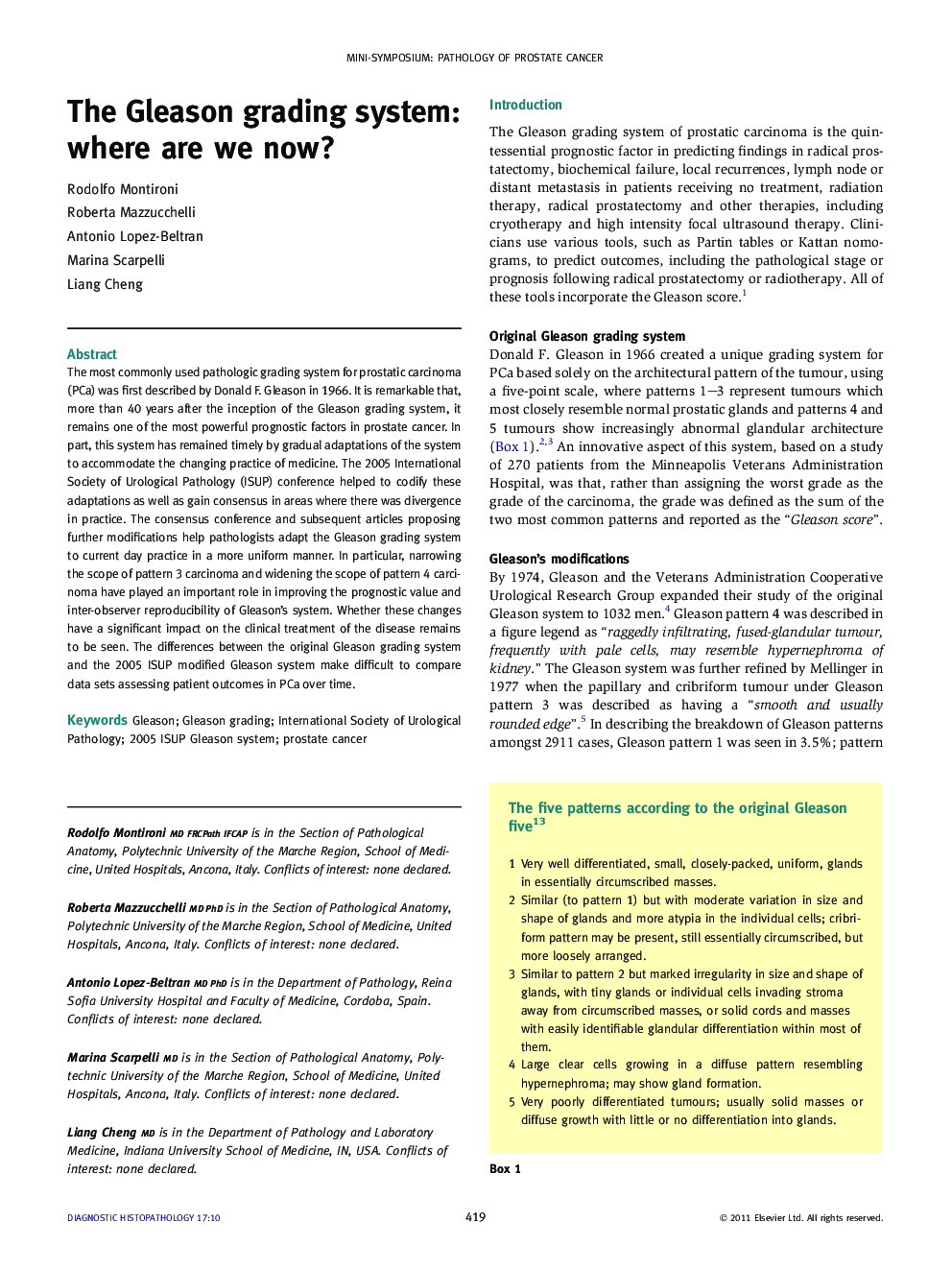| Article ID | Journal | Published Year | Pages | File Type |
|---|---|---|---|---|
| 4131408 | Diagnostic Histopathology | 2011 | 9 Pages |
The most commonly used pathologic grading system for prostatic carcinoma (PCa) was first described by Donald F. Gleason in 1966. It is remarkable that, more than 40 years after the inception of the Gleason grading system, it remains one of the most powerful prognostic factors in prostate cancer. In part, this system has remained timely by gradual adaptations of the system to accommodate the changing practice of medicine. The 2005 International Society of Urological Pathology (ISUP) conference helped to codify these adaptations as well as gain consensus in areas where there was divergence in practice. The consensus conference and subsequent articles proposing further modifications help pathologists adapt the Gleason grading system to current day practice in a more uniform manner. In particular, narrowing the scope of pattern 3 carcinoma and widening the scope of pattern 4 carcinoma have played an important role in improving the prognostic value and inter-observer reproducibility of Gleason’s system. Whether these changes have a significant impact on the clinical treatment of the disease remains to be seen. The differences between the original Gleason grading system and the 2005 ISUP modified Gleason system make difficult to compare data sets assessing patient outcomes in PCa over time.
